Eggs provide a slew of excellent health benefits and can make for a tasty meal. With that said, there is nothing nastier than opening your refrigerator only to inhale the rotten smell of sulfur.
The strong smell is a telltale sign that your eggs are bad — and I think we can all agree that it would be nice to know how to tell whether they've gone bad long before that smell takes over your kitchen.
Is the expiration date stamped on the egg carton the only indication that your eggs have gone bad? Or can you actually use them past that date?
Below, you’ll find five methods you can use to easily check if your eggs are bad. We’ve included step-by-step instructions on how to try these techniques to ensure you’re eating fresh eggs, getting your money’s worth, and avoiding a stinky refrigerator. So grab a carton, and get ready for some interesting egg knowledge.
When Do Eggs Go Bad?
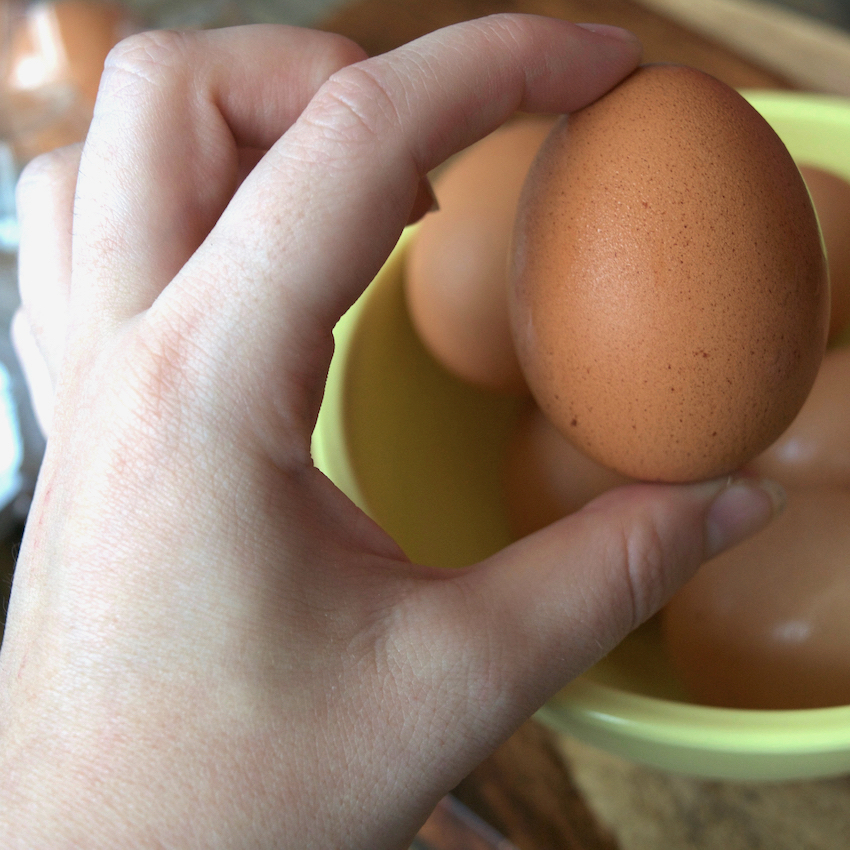
This helpful guide from The American Egg Board is a terrific resource for determining the longevity of your eggs in their various forms. Of course, this chart is likely a conservative estimate of your eggs' freshness. It is their job to increase demand for products on behalf of U.S. egg producers. In short, The American Egg Board wants us to buy more eggs.
- Eggs — Refrigerator (35°F to 40°F)
- Raw whole eggs (in shell) — 4 to 5 weeks beyond the pack date or about 3 weeks after purchase
- Raw whole eggs (slightly beaten) — Up to 2 days
- Raw egg whites — Up to 4 days
- Raw egg yolks — Up to 2 days
- Hard-boiled eggs (in shell) — Up to 1 week
- Hard-boiled eggs (peeled) — Use the same day for best quality
There are also a few dates that egg producers place on egg cartons that are important when making a decision on whether or not to toss your eggs. The pack date informs the consumer when the eggs were washed, graded, and packed into the cartons. This is a three-digit code that coincides with the day of the year, and it is required on all egg cartons. The sell-by date may not exceed 45 days past the pack date and is not required in every state. The expiration date is sometimes stamped on the egg carton instead of a sell-by date. There is no federal law that requires this date.
How Long Are Eggs Good After The Expiration Date?

If you are like me, you have tossed out more than one carton of eggs based on the dates printed on the package. With meats, produce, and herbs, it's relatively simple to tell if they have gone bad. Since an egg is hidden in its shell, you can't use your nose and eyes to test an egg before you crack it, so many of us go by the printed date.
Even though the quality of an egg may start to decline after a certain date, it may still be good to eat for several more weeks, especially if it has been properly refrigerated. Refrigeration preserves the quality of the egg and prevents bacterial growth. In general, eggs go bad when they start to smell, but their freshness and taste is compromised days before that.
How To Tell If An Egg Is Bad
1. The Sniff Test
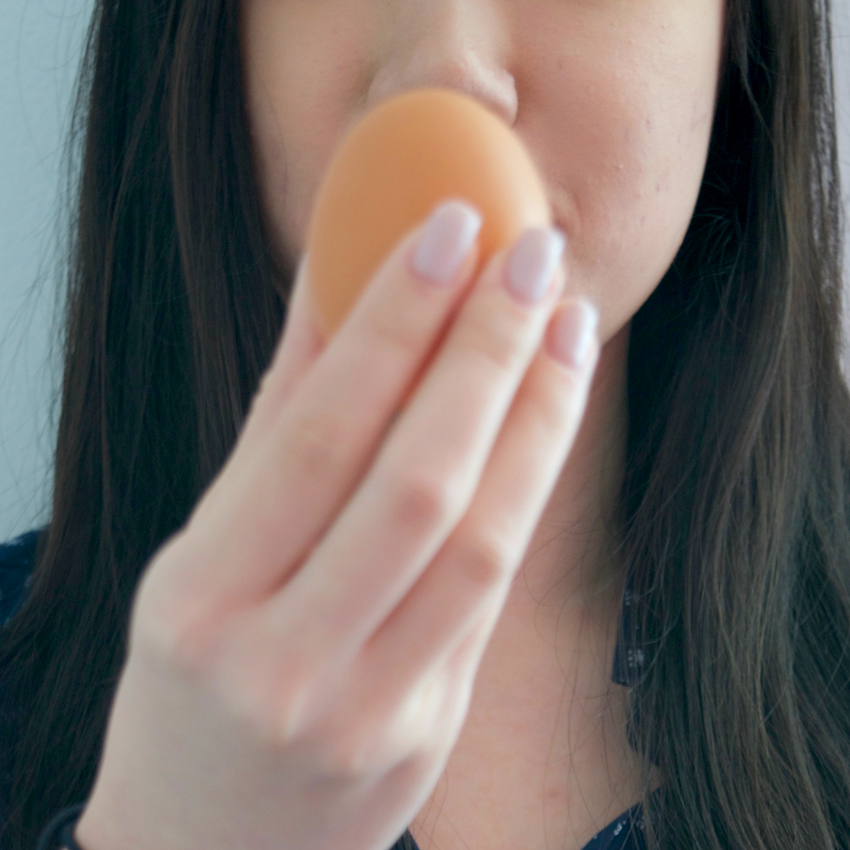
The sniff test is the oldest method of telling whether an egg has gone bad. If you find that your eggs are past their expiration date, you can tell if they are still good with a simple sniff.
Step 1: Sniff the egg. Eggs that have gone bad will give off an unmistakable sulfur-like smell. If there is no smell, the egg is good to eat, and you can start scrambling, frying, or soft-boiling your egg right away.
Step 2: If you are still suspicious, crack the egg onto a clean plate or bowl and give it a sniff. If anything smells, toss the egg.
Step 3: Wash the bowl or plate with hot, soapy water before using again.
2. The Egg In The Bowl Method
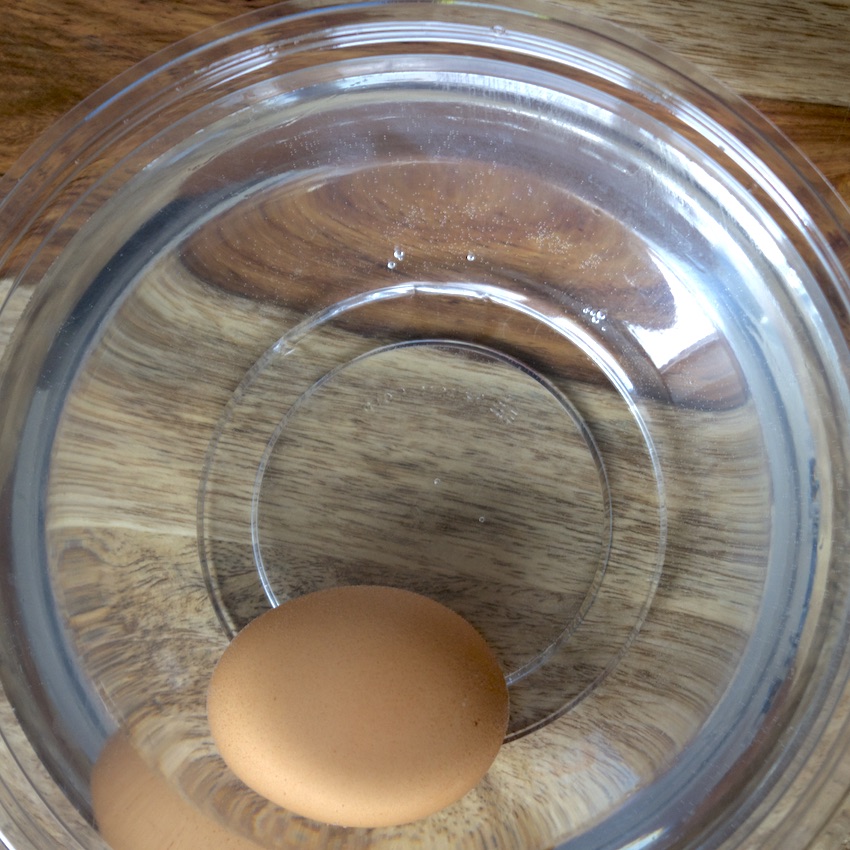
This one-step method is a reliable way to check if your eggs have gone bad. Eggshells are porous, and the liquid inside the egg evaporates over time. The liquid is replaced by outside air. More air in the egg results in eggs that float. Fresher eggs sink, and old eggs float to the top.
Step 1: Fill a bowl with cold water and place your eggs in the bowl. If they sink to the bottom and lay flat on their sides, they're very fresh. If they're a few weeks old but still good to eat, they'll stand on one end at the bottom of the bowl. If they float to the surface, they're no longer fresh enough to eat.
3. The Shake By Your Ear Test
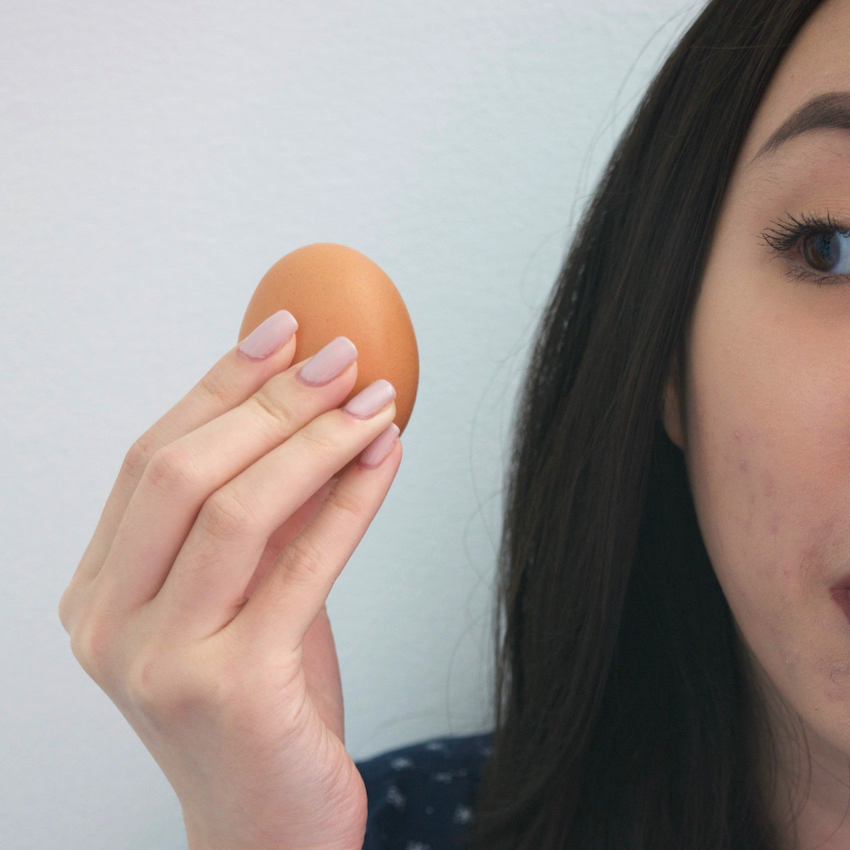
This method falls in line with the method mentioned above.
Step 1: Hold an egg up to your ear and shake it.
Step 2: Listen carefully. If you can hear a sloshing sound inside the egg, it's probably gone bad. If you hear nothing, it is likely to be fine to eat.
4. The Crack and Sniff Method
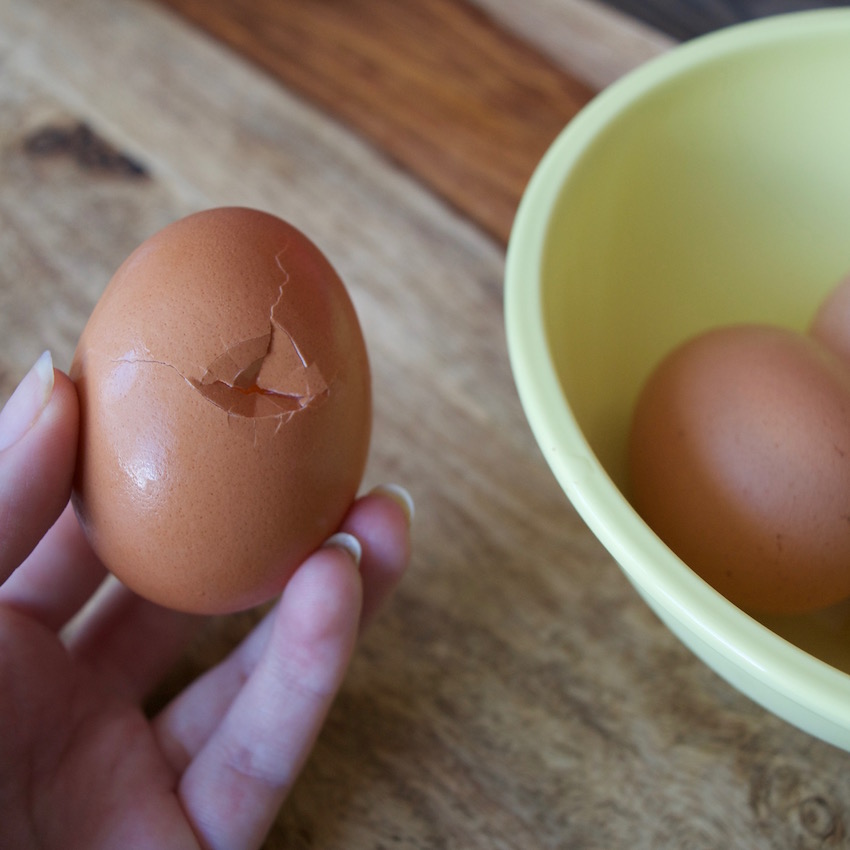
You have likely cracked an egg into a pan and noticed that it looks different than normal. Usually, we go right on cooking hoping that we are not contaminating our system with egg-borne bacteria. Here's a way to avoid that:
Step One: Crack an egg onto a flat surface.
Step Two: Observe the egg. If it's fresh, the yolk should be bright yellow or orange, and the white shouldn't spread much. If the egg is old, the yolk will be flatter, and the white will be much runnier.
If the yolk is flatter and runnier, you should then smell the egg. Eggs should have no smell at all. You might not want to fry up this egg, but the remaining eggs in the container can be hard-boiled.
5. The Flashlight Test
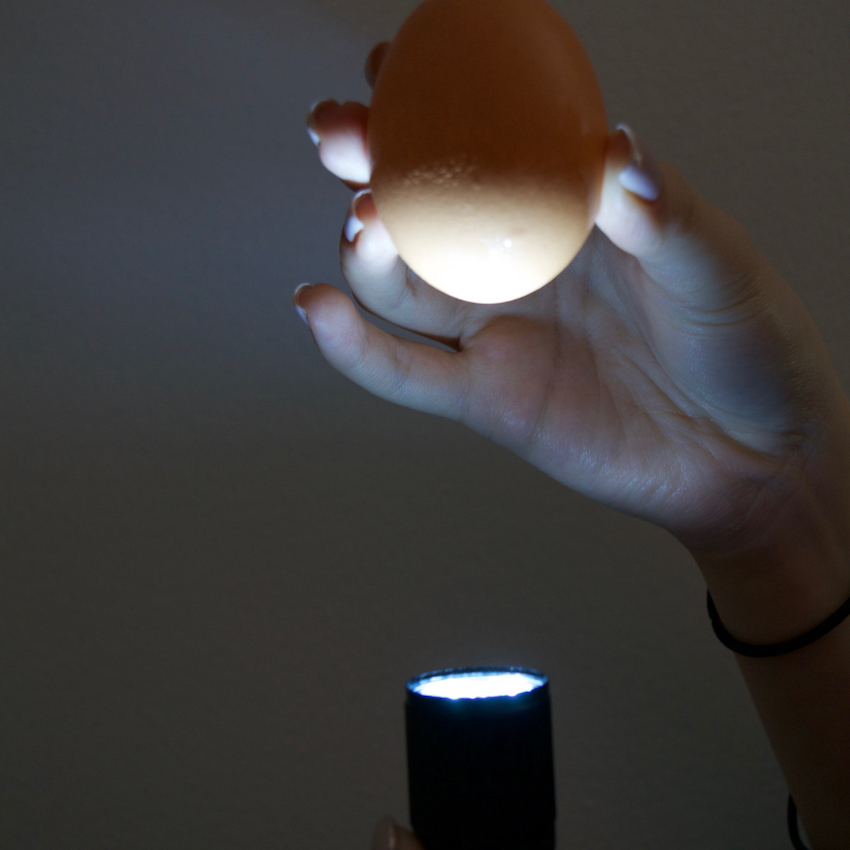
To me, this seems more like a fun experiment to do with your kids, rather than a kitchen hack, but it’s worth a try regardless. Believe it or not, a flashlight can be used to determine the freshness of a regular egg or to assess the development of the chick in a fertilized egg. Since you are likely not researching fetal egg development if you are reading this article, only use this method at home to see if your eggs are bad.
Step One: Go into a dark room with your flashlight. In the past, candles were used, but it's more practical to use a small flashlight or reading light.
Step Two: Hold the flashlight up to the large end of the egg. Tilt the egg, and turn it quickly from left to right. If done correctly, the contents of the egg should be illuminated.
Step Three: Study the contents of the egg. This allows you to see whether the egg’s air cell is small or large. According to The University of Florida, “in a very fresh egg, the air cell should be thinner than 1/8 inch, or 3.175 mm. As the egg ages, gasses replace water lost through evaporation, and the air pocket will get larger.”
It's very likely that millions of perfectly edible eggs go to waste each year. A lack of knowledge about how to tell when an egg has gone bad leads many people to throw out their eggs. Of course, even if your egg passes all of these tests, it still needs to be thoroughly cooked before consumption. Some eggs contain bacteria that cause food-borne illnesses, such as salmonella. Salmonella can be present even if your egg looks and smells totally normal, so always cook them properly.
If you plan to use these methods to check if your eggs have gone bad, make sure to SHARE them with anyone who could use a few tips!




